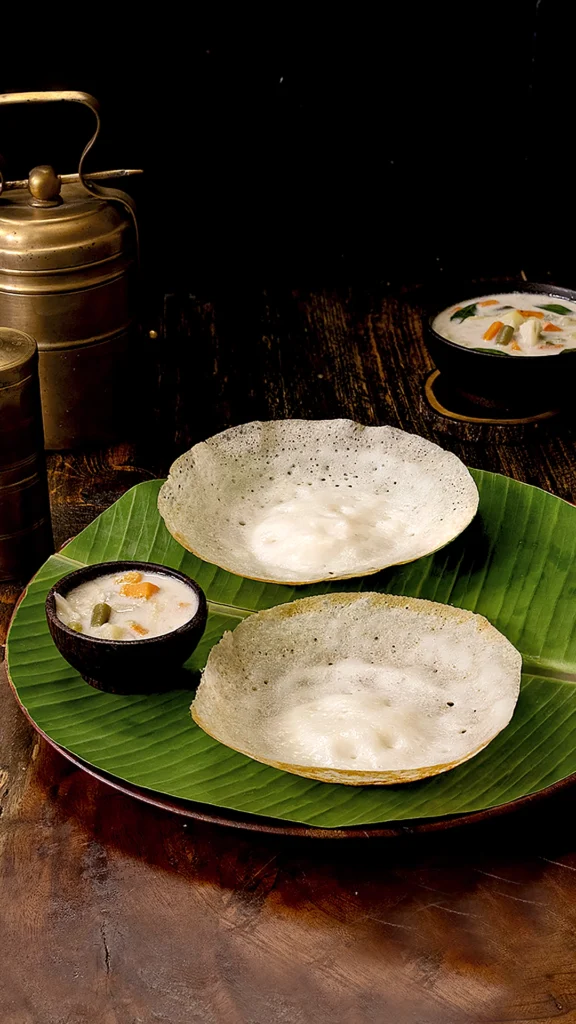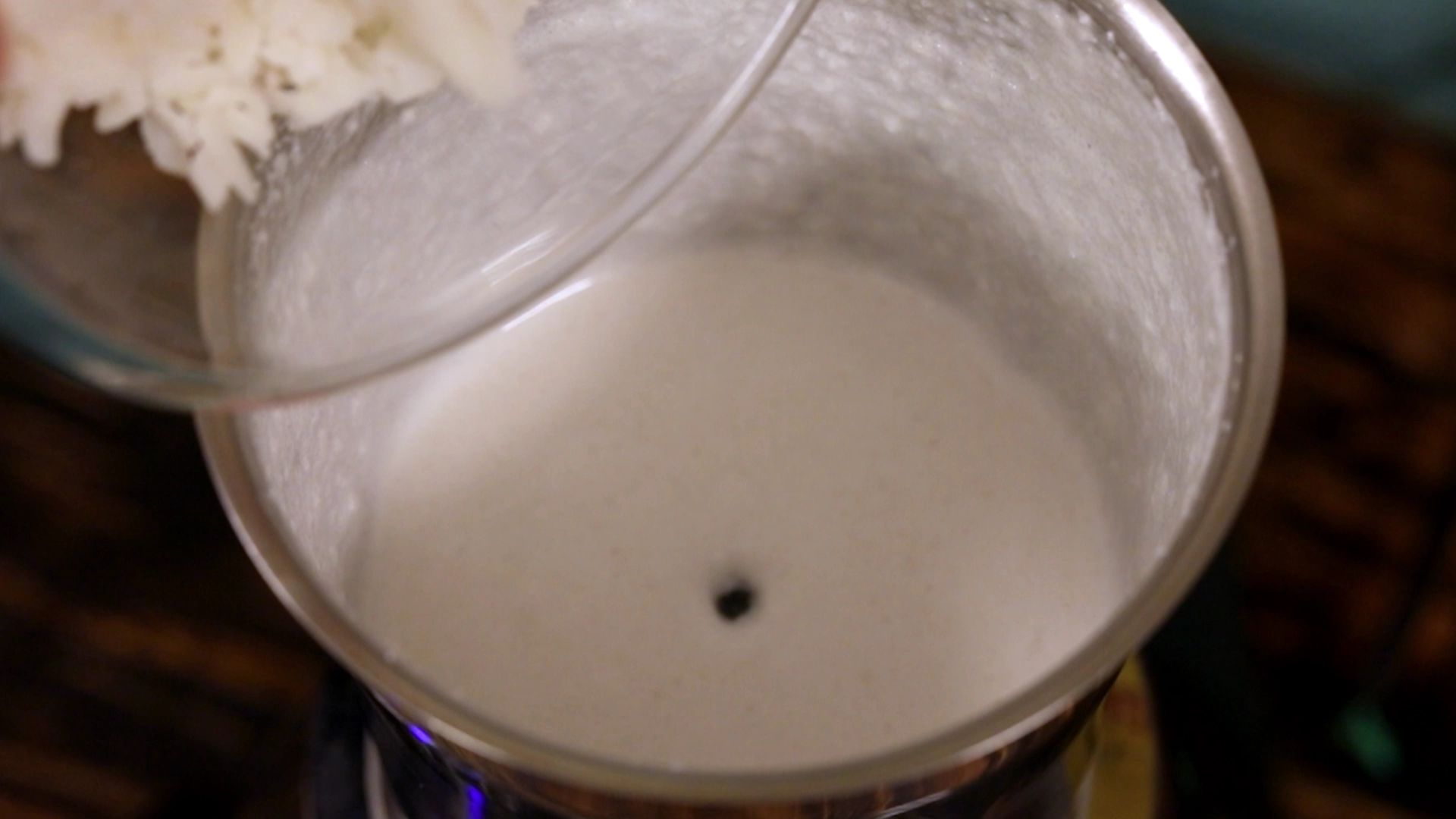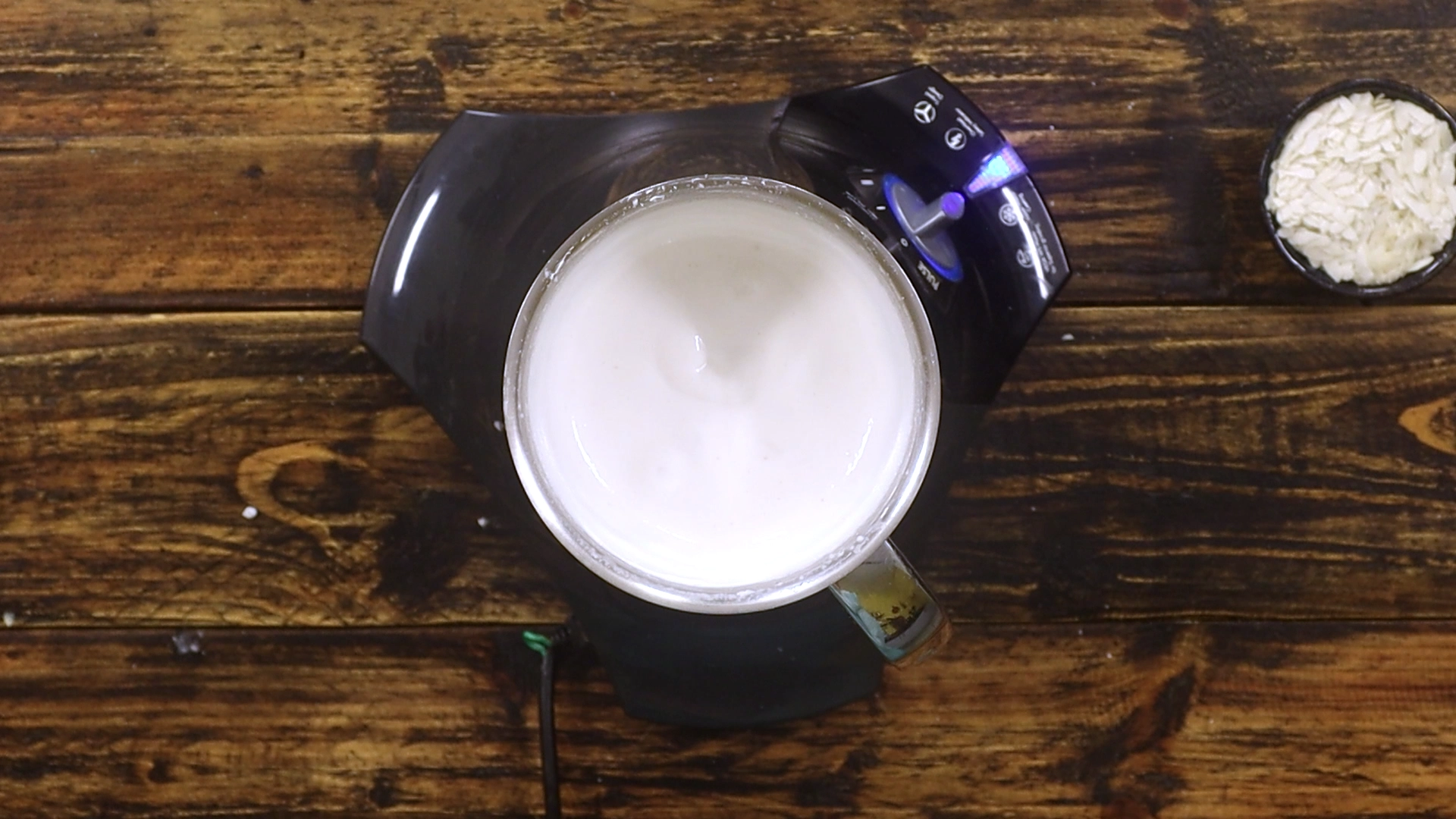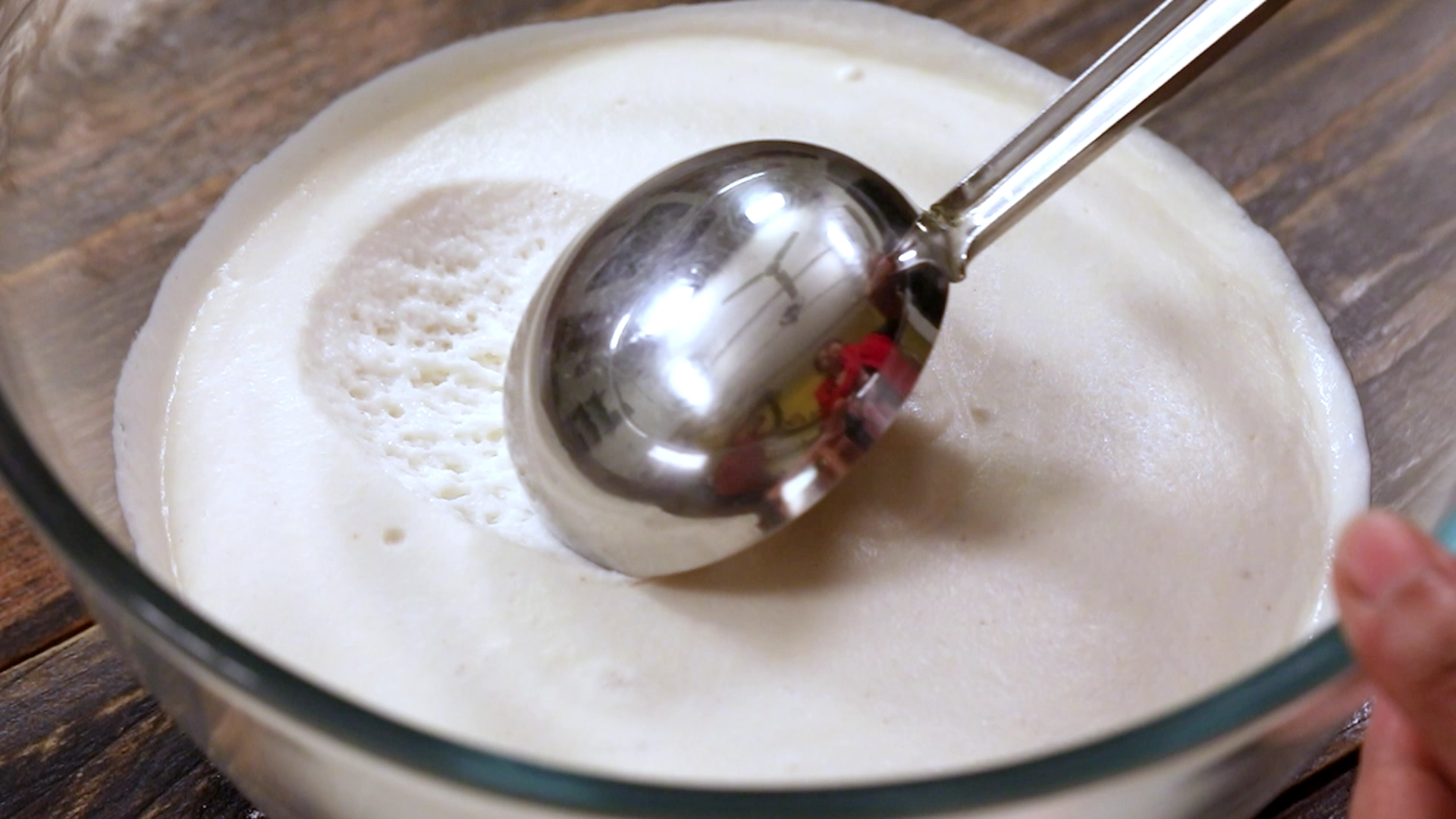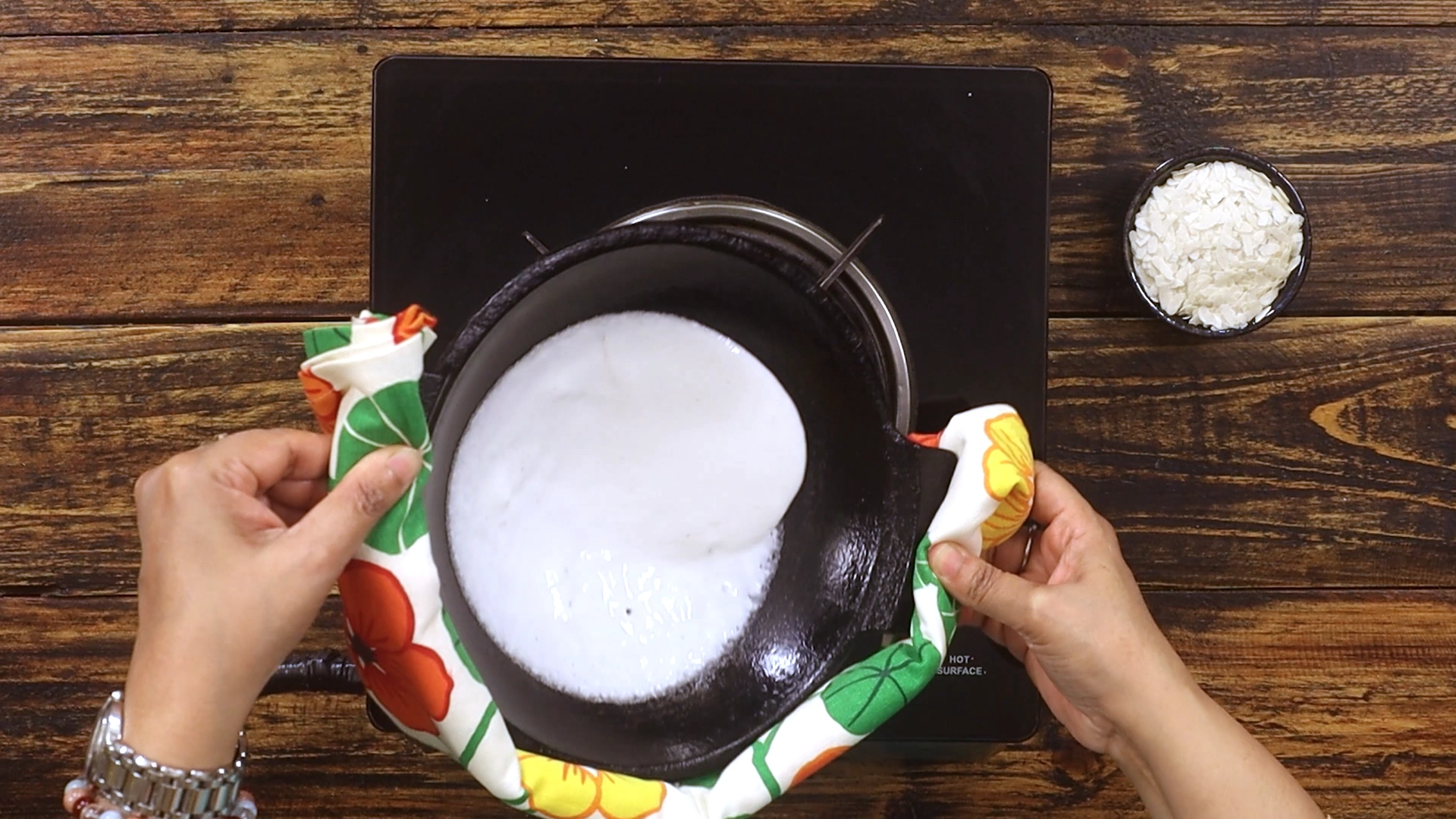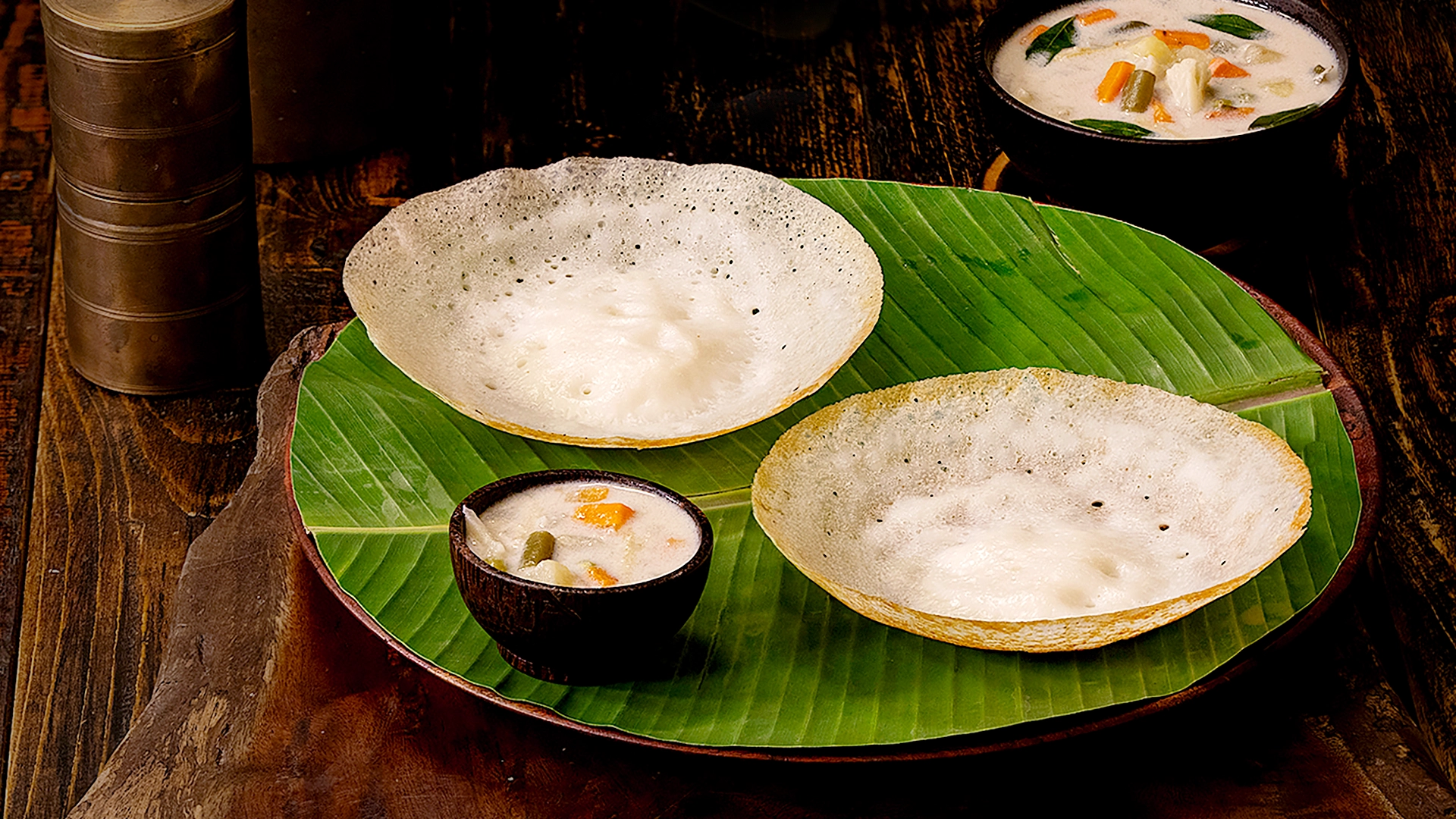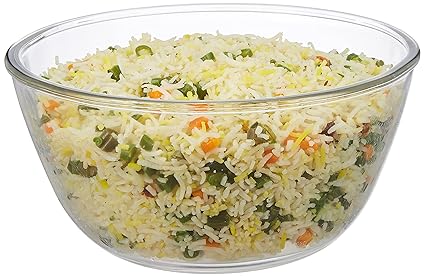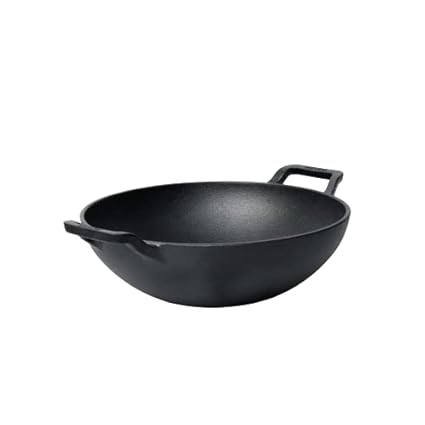Ever had a bite of appam so pillowy in the middle and crisp at the rim that you immediately want seconds?
That’s the magic of appam — South India’s beloved breakfast that’s equal parts comfort and celebration. Light, slightly fermented, and coconut-kissed, it’s the kind of dish that makes weekday mornings feel special
Why you’ll love appam
- Texture contrast: paper-thin, crisp edges with a soft, spongy center — ideal for soaking up stews and coconut milk.
- Flavor: subtle tang from fermentation, a touch of sweetness from sugar, and a gentle coconut aroma.
- Gut-friendly: fermented batter is easier to digest and has mild probiotic benefits.
- Versatile: pairs with anything from spicy vegetable stew to lightly sweetened coconut milk.
A little background
Appam is a classic from Kerala and Tamil Nadu kitchens — often made for festivals, special breakfasts, or weekend feasts.
The version you’re working with (rice + poha + coconut, fermented overnight) is the traditional, tried-and-true technique that gives appam its signature softness. Think of it as South India’s answer to a light, fermented pancake — but with its own profile and personality.
Ingredients Breakdown
- Raw rice — the body of the batter. Gives structure and chew in the center.
- Poha (flattened rice) — the secret to softness and quick fermentation; it makes the center airy.
- Fresh grated coconut — adds richness, a silky mouthfeel, and that classic coconut aroma.
- Sugar — feeds fermentation a little and balances the tang.
- Salt — enhances all flavors.
- Oil — for a non-stick sheen and crisp edges.
- Vegetable stew or coconut milk — traditional accompaniments that complement appam’s mild tang.
Here’s how it actually comes together
Start by giving the rice a good soak — this hydrates the grains and shortens grinding time. Separately soak the poha half an hour before blending; it’s the poha that makes your appam soft and cloud-like without needing yeast.
When you grind, don’t go for an ultrafine batter at once. Pulse the rice first so it’s partly broken, then add the poha and coconut and finish to a smooth, flowing batter. The batter should be pourable — thicker than dosa batter but not a paste.
Cover the bowl and let fermentation work its quiet magic overnight in a warm spot. You’ll know it’s ready when the batter smells mildly tangy and looks a bit frothy. Next morning, give it a gentle stir. If it feels too thick, add a splash of water — you want it to spread in the pan when you swirl.
Heat your appam pan on medium and oil it lightly. Pour a ladle in the center and swirl so the batter runs thin to the edges. Cover immediately — the steam cooks the center while the edges crisp. In about 1–2 minutes the edges should be lace-like and the center soft and set. Slide it out and serve hot.
This method keeps the flow natural — you’re coaxing texture with two simple moves: the right batter consistency and controlled steaming.
Pro Tip 💡: If fermentation is slow (cold kitchen), place the covered batter inside a switched-off oven with the oven light on or next to a warm appliance. That gentle warmth speeds up fermentation without over-fermenting.
What goes along
- Vegetable stew (Kerala-style) — classic pairing: creamy, mildly spiced stew with potatoes, carrots, and coconut milk.
- Sweet coconut milk — warm coconut milk with a hint of sugar or jaggery for a breakfast treat.
- Chutneys — mint or coconut chutney for a lighter, fresher combo.
- Egg stew or spicy kurma — for non-vegetarian or spice-lovers, these are excellent.
How to serve
Serve appams hot, plated in stacks of 2–3 with a bowl of vegetable stew or warmed coconut milk. If you’re doing a spread, arrange appams in a basket lined with a cloth to keep them warm and slightly steamy.
Packing & lunchbox tips
- Cool completely before packing to avoid sogginess.
- Layer appams between parchment or banana leaf pieces to prevent sticking.
- Reheat on a skillet with a few drops of oil for 30–60 seconds — this restores crisp edges better than a microwave.
Party / bulk preparation
- Batter scale-up: multiply proportions — you’ll need bigger bowls and more time to ferment. Split large batches into smaller containers to ferment evenly.
- Make-ahead: batter keeps in the fridge for 2–3 days after fermentation; bring to room temp before using and adjust with water.
- Speed option for crowds: use multiple appam pans or a large non-stick skillet; keep finished appams warm in a low oven (100°C / 212°F) on a wire rack.
Appam(hoppers)
Description
Appam is one of those simple, heartwarming south indian dishes that feels like home. These soft, lacy pancakes are made from a fermented mix of rice, poha, and coconut — nothing fancy, just honest ingredients and a bit of patience. The batter ferments overnight, and in the morning, you get to swirl it gently in a hot pan, watching the edges turn golden and crisp while the center stays beautifully soft.
Serve your appams warm with vegetable stew, coconut milk, or even a mild curry. It’s light, slightly tangy, and perfect for a lazy sunday breakfast or a comforting tiffin. Once you make them fresh at home, you’ll never want to settle for store-bought again.
Ingredients
Instructions
Prep Work
-
Wash and soak rice
Wash the rice until water runs clear, then soak it in water for about four hours.
-
Soak poha
Thirty minutes before you grind, soak the poha so it softens — this helps the appams become airy. -
Grate coconut
Grate fresh coconut and keep it ready for grinding with the rice. -
Drain rice and set up grinder
Drain the soaked rice and have your grinder or blender ready with a little water nearby. -
Set a warm spot for fermenting
Prepare a covered container and choose a warm spot to leave the batter to ferment overnight.
Method
-
Grind rice halfway
drain the soaked rice and grind it with a little water until the rice is half-ground.
-
Add poha and coconut
Add the soaked poha and the freshly grated coconut to the grinder. -
Grind to smooth batter
Grind everything to a smooth, flowing batter, adding water gradually until smooth. -
Mix sugar and salt
Transfer the batter to a bowl, stir in the sugar and salt, then cover the bowl. -
Ferment the batter
Keep the covered batter in a warm spot overnight or for about 12 hours to ferment. -
Check and adjust
Next morning, gently stir the batter; if it looks thick, add a splash of water to loosen it to a pouring consistency. -
Heat and oil pan
Heat an appam pan and lightly brush the surface with oil. -
Pour and swirl
Pour a ladleful of batter into the center and immediately swirl it to spread thinly along the edges. -
Cover and cook
Cover the pan and cook for 2 minutes until the edges are crisp and the center stays soft. -
Serve warm
Remove the appam and serve warm with vegetable stew or coconut milk.
Nutrition Facts
Servings 2
- Amount Per Serving
- Calories 289kcal
- % Daily Value *
- Total Fat 6g10%
- Sodium 288mg12%
- Potassium 100mg3%
- Total Carbohydrate 53g18%
- Dietary Fiber 1g4%
- Sugars 3g
- Protein 5g10%
- Calcium 15 mg
- Iron 0.7 mg
* Percent Daily Values are based on a 2,000 calorie diet. Your daily value may be higher or lower depending on your calorie needs.

